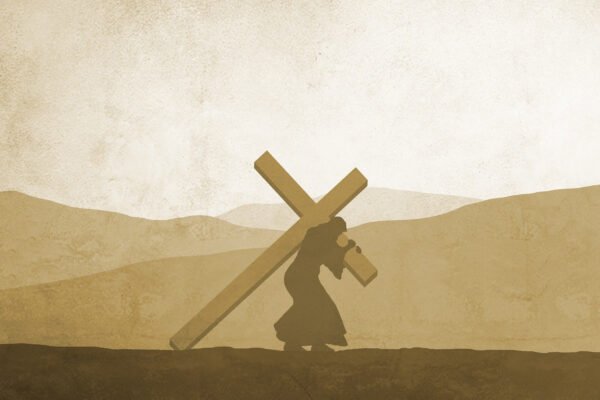by Bonita Jewel Hele
During my college years, I needed to take an art class to fulfill my general education requirements. Lacking skill in artistic mediums such as pencil and paint (though I have mastered the art of the stick figure), I chose to take Introduction to Photography.
The professor was a cheerful, white-haired photographer who outlined the basics of photography: composition, lighting, color, perspective. He introduced terms that were new to me: aperture, f-stop, shutter speed.
Perspective
He taught a concept that any experienced photographer is familiar with: perspective. Adopting the right perspective is vital to taking a good photograph.
As a student of English and creative writing, I knew about perspective in literature — often referred to as point of view. But it was a new idea for me in the field of photography.
New viewpoints
Think about the photographs you consider most memorable. They probably have a unique perspective, an unexpected point of view.
To capture a striking picture, you change your perspective. Instead of taking a picture from eye level, you shoot the photo from ground level, tilting the camera upwards at your object. Or you capture the image from above, looking directly down on a scene.
The professor encouraged us to find new viewpoints for our photographs. I tried different angles and found my photography improved with that single difference: perspective. But it took courage sometimes to lower myself to my knees or even to my stomach to find a better angle for a photo.
Human perspective
When reading through the New Testament, I realized that perspective is a term reserved not just for the art of photography and the craft of writing.
Jesus, our Lord and Savior, used it first.
The Word that spoke and brought the heavens and earth into existence entered time’s boundaries to take on humanity. Because we are bound to this limited realm, Jesus adopted our perspective. He embraced flesh and blood, heartache and hunger. He acquainted Himself with discouragement and despair, temptation and trial, to become our advocate.
He who held all the power and privilege of the universe became one with us lowly human creatures. He walked. He knelt. He stooped. Jesus took on a different point of view, touched with every feeling that consumes us so that He might know us completely.
Sinful woman
One morning, Jesus sat in the temple, speaking to the people. He was interrupted by a swarm of scribes and Pharisees, righteous and self-righteous. A woman was cast to the ground in their midst, accused. One word, one command from Jesus, and she would be stoned to death, the expected judgment in that era for the act of adultery.
Instead of responding, however, Jesus stooped down and wrote in the sand. What did He write? And why? No one knows.
Shared perspective
But look at the scene.
At that moment, Jesus was not standing at eye level with the accusers. He was not standing over the woman in self-righteous judgment. He was near the ground, near the woman who had been cast down. He breathed in the choking dust. His finger traced the same dirt that coated her in filth as she was dragged to this place.
At that level, Jesus took on the perspective of the accused woman. When her opponents persisted for a verdict, Jesus did not accuse her. He stood up and, with a profound statement, implied their guilt. He saw that guilt in their eyes. He heard it in their words. He felt it in their desire to use the woman to trap and condemn Him, the only one who was truly righteous.
“He that is without sin among you, let him first cast a stone at her” (John 8:7).
Without speaking another word, Jesus knelt again, once more seeing life from the woman’s point of view . . . and from ours.
One by one, the accusers dropped their stones. The woman was left with Jesus, who had stooped to see life from her perspective and changed her life by giving her another chance.
Unique title
John, the beloved disciple who narrated this story, gave Jesus a unique title in Scripture: advocate. He wrote, “If any man sin, we have an advocate with the Father, Jesus Christ the righteous” (1 John 2:1).
Now, as then, Jesus is our advocate.
He experienced life from our human perspective, from that lowly place.
We stand as sinners. We see ourselves as outcasts. If the sentence were passed, we would be found guilty of every indictment leveled against us, yet Jesus was willing to let go of His privileged position in eternity’s palace to advocate for us.
He wielded His power not as one might expect, not to command armies or overthrow kingdoms but to take on the perspective of the accused. From there, He poured out forgiveness and grace to all who believe and receive so that we might stand upright and see life from His perspective. In true freedom.
Hard questions
Nearly ten years have passed since I took that class and was introduced to the idea of perspective in photography. Still, every time I drop to my knees or lie sideways, camera in hand, to adopt a unique point of view for a photo, I am reminded of the way Jesus took on humanity’s perspective.
In light of this truth, I am also confronted with a couple of hard questions: How should I respond to this perspective of freedom from the bondage of sin? What am I called to do from this point of view found only through Christ Jesus?
What is our task as believers of the truth that will set others free? The answers will be different for each one of us, unique to our background, experiences, and circumstances.
Action
But we can each do something.
Reach out a hand. Take time to listen — truly listen — to someone with a story to tell. Spend time with God in prayer, Bible reading, and reflection so that we might take on more of His nature and be transformed into His image more and more each day. And, when circumstances call for it, lean down in humility and take on the perspective of someone who needs to be pulled up into a place of grace and acceptance.








